Genre: Action/RPG Developer: Westone Publisher: Sega Ent. Players: 1 Released: 1989
The original Wonder Boy was a game I first experienced in arcades, and I immediately hoped to see a Master System port when I saw that beautiful Sega logo. I played the hell out of that version, and I was surprised to see the arcade sequel go in an entirely different direction. Still, Westone had that magic and made Wonder Boy in Monster Land an instant classic. I was captivated by the action/RPG elements and was perfectly content with the franchise shaking (mostly) free of its platforming roots and sticking with the redirection. Monster Land was charming, fun, and highly replayable (all those secrets!) and I wanted more.
Westone did return to the arcade for another Wonder Boy with Monster Lair, an auto-scrolling shooter that had great graphics and stellar soundtrack. That game was eventually ported to both the Mega Drive and TurboGrafx-16 CD-ROM (where the soundtrack is simply phenomenal), but I wanted more action/RPG goodness! It was amazing then, to learn that the third game was going to forego the arcade and come directly to Master System. I waited eagerly for it, and Westone didn’t disappoint me. Wonder Boy III: The Dragon’s Trap builds upon Monster Land’s terrific foundation to craft a captivating journey that seamlessly blends classic platforming action with innovative mechanics, crafting an unforgettable experience that’s among the best titles on the Master System.
The story in Dragon’s Trap immediately follows the events of Monster Land with a remixed version of its final stage, leading to Wonder Boy being cursed and transformed into Lizard-Man. Players must now collect parts of the Salamander Cross by defeating boss dragons to return to human form. Each piece unlocks a new animal form with unique abilities, and there are a total of five transformations: Lizard-Man, Mouse-Man, Piranha-Man, Lion-Man, and Hawk-Man. Players must navigate through the environments utilizing these abilities to overcome obstacles and unlock new areas. Whether soaring through the skies as Hawk-Man or scaling walls as Mouse-Man, every transformation offers a fresh perspective on exploration. For instance, Mouse-Man’s ability to stick to walls opens intricate maze-like sections. The environments are varied and cleverly designed, letting players get just far enough to realize they need another transformation to proceed. Also, some items are hidden and only available with specific transformations, encouraging players to revisit previous areas with newfound abilities to uncover hidden pathways and valuable loot. The only issue I have with the different locations is that they’re a bit more linear than they first appear to be. There’s little figuring out to do once you have the right transformation, and it often takes little more than moving left or right to find the next boss.
The Dragon Trap’s emphasis on exploration makes the game a ton of fun, but there’s also a tiny bit of role-playing involving Charm Points (CP), which reminds me of the charisma stat in games like Dungeons & Dragons and dictates which items shopkeepers are willing to sell to you. I like the concept and understand what Westone was going for, but the implementation stumbles quite a bit. What we have is a textbook case of old school Master System gameplay mechanics that kids never understood. The problem lies in that game doesn’t disclose the necessary Charm Point level required to buy specific items, so if it’s too low, question marks appear instead. The points you have depend on your gear, current form, and rare charm stones that you find throughout the game. Shopkeepers are more likely to sell to a character that looks appealing and well-equipped (the pig smoking a cigarette is quite picky). As a kid, I never knew what the question marks meant or that collecting charm stones even had that purpose. The instruction manual does mention it, but back in the day a lot of my Master System time was spent with rented games, so I missed a lot of these specific details. The Dragon’s Trap became a lot more enjoyable when I learned about the whole charisma and charm stone dynamic years later (thanks, Internet!). I also learned that players could exploit a loophole by repeatedly finding the same hidden treasure chest, exit the game with a password, and raid it again.
The Dragon’s Trap retains the simplicity of Monster Land’s control scheme, with button 1 for attacking and button 2 for jumping, but it’s worth noting that accessing the inventory screen via the console’s pause button is still an inconvenience, especially during intense moments of gameplay. There’s also that classic Master System dilemma of glitching the game by tapping the pause button too hard, a fear owners of the console knew well. Also, The Dragon’s Trap isn’t an excessively long game, but it’s unlikely that you’ll explore everything in a single play session. Westone thankfully included a password option, though its length could have been an issue back in the day. I do wish it had the great backup save option of the TurboGrafx-16 version with the TurboBooster Plus or CD-ROM attachment, but passwords were a common thing back then, and I guess it’s better than starting from scratch each time.
Visually, The Dragon’s Trap is one of my favorite Master System titles, boasting vibrant and lush environments and beautifully detailed sprites that really breathe life into Westone’s vast game world. From lush forests to scorching deserts, each locale is rendered with great attention to detail. Despite occasional sprite flickering during crowded encounters and some static backgrounds, the game still retains a lot of visual charm, augmented by Westone’s delightful character designs and expressive animations. I’ve always loved the developer’s art style in the Wonder Boy games, and it fits so well on the Master System.
Accompanying the excellent visuals is a lively soundtrack that perfectly complements the game’s energetic atmosphere with that beloved Master System style. The Japanese version has some great FM sound, but the western release still sounds great. I know some people argue that the music may veer towards the overly cheerful side at times, but to me it undeniably contributes to the game’s sense of joy and adventure. Shinichi Sakamoto’s terrific music is a hallmark of the franchise and core to what’s made it so popular. You really do need to hear it with the FM sound enhancement; it’s a lot richer and robust, something you just couldn’t get in western Master System games back in the 8-bit days. Thankfully, it’s possible to play The Dragon’s Trap with it today. I admit that there’s a lack of variety in tracks that may become noticeable over extended play sessions, but the selections are catchy as hell, especially the dungeon themes, and there’s enough of them to keep the soundtrack from wearing thin over extended play.
As I mentioned, The Dragon’s Trap was released on the TurboGrafx-16 in 1991 (without the Wonder Boy moniker) and had a save option for those using the TurboBooster Plus or the CD-ROM add-on, making it the definitive one of the era. Sega itself ported The Dragon’s Trap to Game Gear a year later, but modern gamers would do best to partake of the delightful 2017 remake by Lizard Cube and DotEmu, reimagined for modern consoles and with the collaboration of Westone founder and Monster World series creator Ryuichi Nishizawa. It’s a love letter to fans of the series and one not to be missed.
In conclusion, The Dragon’s Trap on Master System stands as a shining example of timeless game design, blending innovative mechanics, captivating visuals, and an infectious sense of adventure to create an experience that is as enchanting today as it was upon its initial release. With its richly detailed world, engaging gameplay, and memorable soundtrack, The Dragon’s Trap is a worthy addition to the Wonder Boy series and continues to captivate players of all ages, cementing its status as a true Master System classic.
SCORE: 8 out of 10

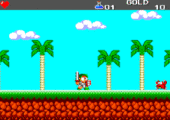
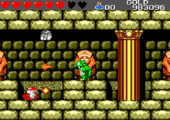
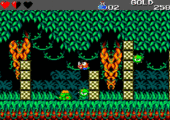
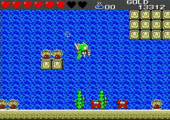

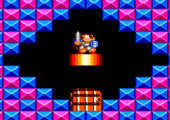
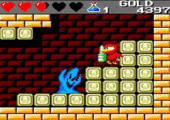
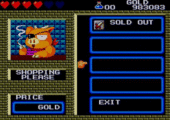
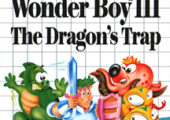
Best SMS game, without a doubt. And probably the best game of the Wonder Boy series. How could it be less than 10 out of 10?